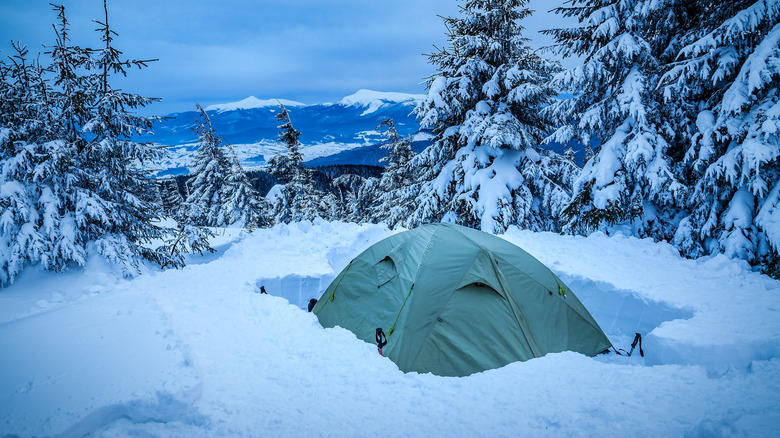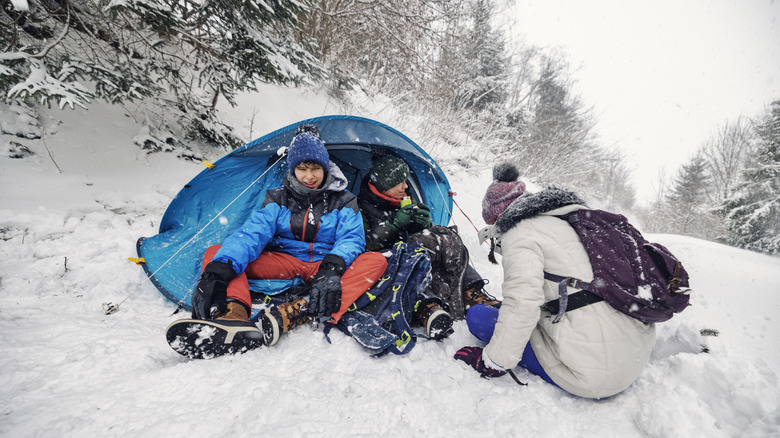If You're Camping And Caught In A Sudden Snowstorm, Avoiding One Thing Could Save Your Life
We may receive a commission on purchases made from links.
Winter camping offers the chance to see the forests in a way few people get to enjoy. Gleaming icicles catch the light, and tumbling waterfalls turn into glassy sculptures frozen in time. And, with less crowded trails, it's an ideal time to experience the natural world without having to share. However, if you're caught in your tent during an unexpected snowstorm, never attempt to navigate the trails back to your vehicle.
As snowfall increases, whiteout conditions make it difficult to follow the path, and you might not recognize trail signs or features you previously encountered. Winter weather can change quickly, and what started out as a mild snowstorm could turn into a serious blizzard. Instead of risking getting lost on the trails, hunker down in your tent and wait until the weather passes.
Your priority should be staying warm and sheltered. Environmental factors, including hypothermia, are one of the leading causes of death in national parks, according to National Park Service mortality data. So, before settling in, make sure your tent stakes are firmly planted in the ground. Periodically wipe snow or sleet off the roof to ensure your tent doesn't collapse under the weight. Even though you likely won't be able to make this clever DIY camping heater, there are other ways to stay warm. Pack extra clothes around your feet and head, and add a layer between your sleeping bag or pad and the ground if possible.
What else can you do to stay safe camping during the winter?
The best way to camp safely during the frigid winter months is to be adequately prepared. This means selecting gear carefully, testing new items before hitting the trails, and thoroughly researching your destination or campsite. For instance, choose a site with a natural windbreak, such as a thicket of trees or a rock outcropping. However, never camp near dead or rotting trees because they could collapse on your tent. Weak branches weighed down with snow also present a danger that's easy to overlook when paying attention only to the icy ground.
In terms of essential gear, choose a cold-weather sleeping bag rated for at least 18 degrees Fahrenheit below the coldest temperature you anticipate encountering. The Marmot Never Summer 0 Degree Sleeping Bag is a good entry-level, four-season sleeping bag on the lower end of the price spectrum. You'll want to purchase a three- or four-season tent, depending on the expected temperatures. Keep in mind that four-season tents have fewer vents, which keeps gusts out but can also increase condensation inside. Your winter camping checklist will have a lot more than the five items you'll want for a quick and easy camping retreat, and that's okay.
Finally, always check the weather on the day of your camping excursion, and don't be afraid to reschedule if the conditions aren't right. When in doubt, plan your trip with a more experienced winter camper who can show you the ropes. Or, explore the warmest national parks to visit in the winter.

